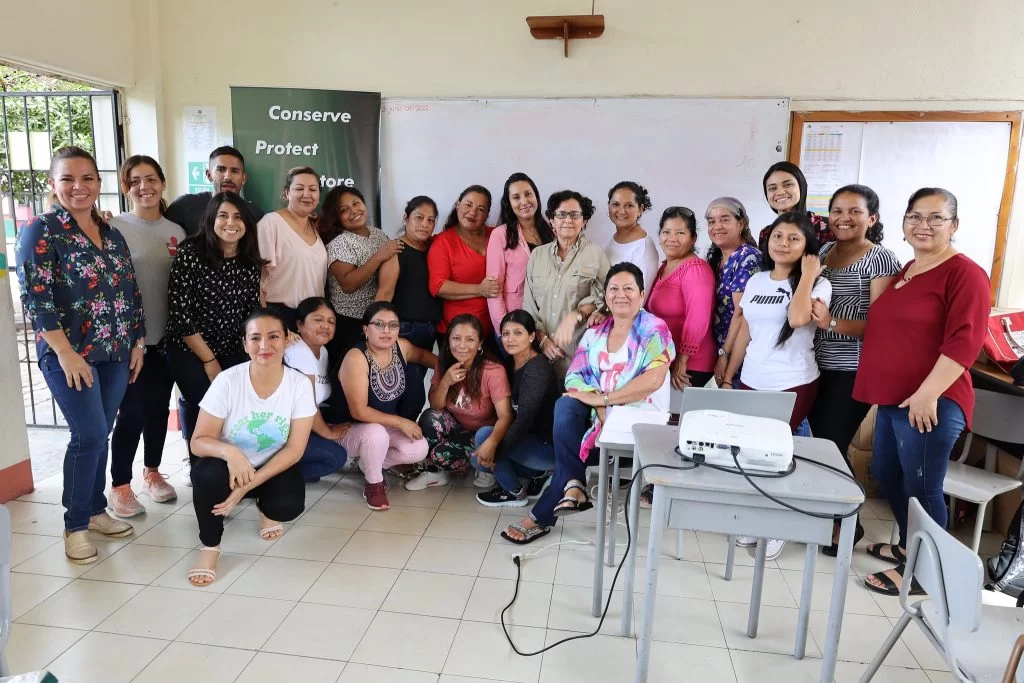It is difficult to care and love about something you don’t know. Education for Sustainability helps students and teachers understand the Islands and the wider world. Every action we take has consequences. Understanding the environment helps us all to make better decisions, individually and collectively.
Mayra Flores is a school principal on Isabela Island and a teacher. These thoughts were shared by Mayra Flores after the Galapagos Conservancy’s June Teachers Institute, which was the 11th week-long professional development event hosted by Education for Sustainability of Galapagos.
All 400 teachers in Galapagos have joined ESG to help students learn core subjects within the context of global and local sustainability issues. This includes interdisciplinary learning, experiential learning outside the classroom, connections to local experts, and learning while tackling real-life problems.
The ESG Program has been developing 60 teacher-leaders since 2017. They are now able to duplicate the instruction provided by program staff throughout each year. Teacher-leaders are now involved in the delivery of programs and support their peers. Teams of leaders collaborated with program staff to create model units that were interrelated to the essential topics and learning standards in the Contextualized Curriculum of Galapagos. The October 2021 unit was a month long and focused on issues related invasive species. The integrating theme for June was marine and terrestrial biodiversity. Leaders shared their ideas and assisted their peers to adapt the units for specific grades and islands. They also helped adjust or redesign activities and develop new support materials.
Teacher-leaders were also trained as facilitators during June. They managed groups of 30 teachers each week and replaced facilitators from other countries. Mayra says, “[Being an facilitator] has helped strengthen my skills related to collaborative, interdisciplinary planning and contextualized learning. It also allowed me to tap into local sources of expertise including naturalist guides and scientists.”
Mayra believes that teachers are more comfortable teaching sustainability education. Six years ago, sustainability seemed abstract and complicated to us. It was not relevant to our teaching jobs. We now know that sustainability is vital for all Galapagos residents. It provides teachers with a strong framework for teaching and learning.

June 2022 Teacher’s Institute
Because it is the most important nesting site in the eastern Pacific, the Galapagos archipelago makes it an important location for Green Sea Turtle conservation. Sea Turtles are at risk from certain human activities like commercial fishing and poor waste management. This is why Green Sea Turtles have been listed as endangered on the International Union for Conservation of Nature’s Red List.
Galapagos Conservancy funds a monitoring and research project by the Galapagos National Park Directorate, (GNPD) to improve and update knowledge about the Green Sea Turtle’s conservation status, population dynamics, and other issues.
The GNPD’s turtle experts focus their research efforts in the archipelago on two of the main Green Sea Turtle nesting areas, Quinta Playa beach on Isabela Island and Las Bachas on Santa Cruz Island. They set up permanent camps to monitor nesting and hatching activity nightly during the nesting season (January through May).
Researchers and technicians spent 98 days in the field monitoring 638 Green Sea Turtle individuals and 400 Green Sea Turtle nests at Quinta playa and Las Bachas. They can determine the hatching rate of each season and use this information to assess the health of the Green Sea Turtle population.
Dr. Jorge Carrion is the Director of Conservation at Galapagos Conservancy. He said that each nesting season provides information about population trends, behavior of nesting Sea Turtles and the impacts of climate change on reproduction. Galapagos Conservancy’s main goal is to provide the information necessary to develop management strategies, mitigate threats and implement measures to protect the Green Sea Turtle.
It is vital to support research and protection of this iconic species in the Galapagos Marine Reserve, as there is only a 1 in 1,000 chance of survival.